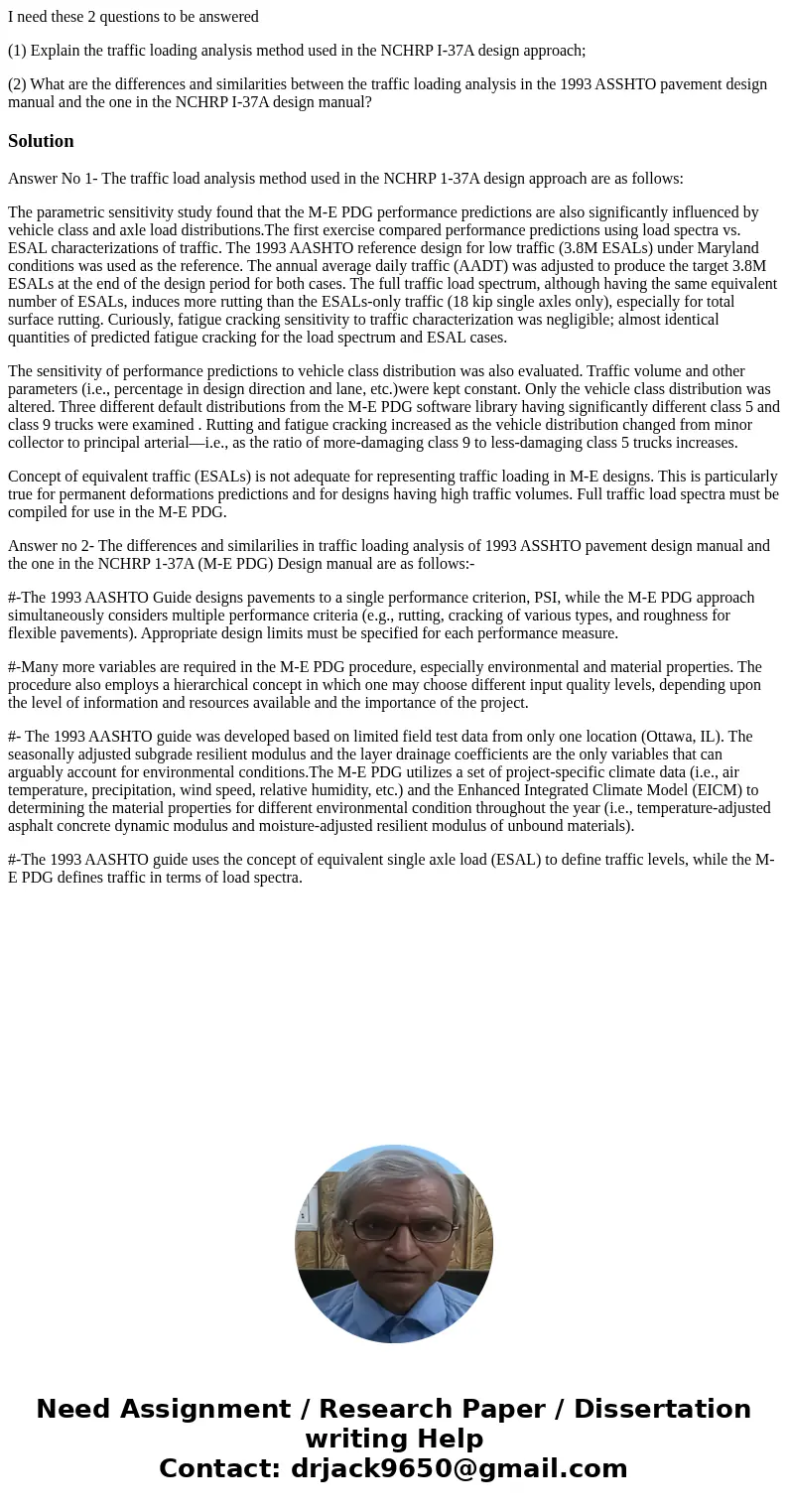I need these 2 questions to be answered 1 Explain the traffi
I need these 2 questions to be answered
(1) Explain the traffic loading analysis method used in the NCHRP I-37A design approach;
(2) What are the differences and similarities between the traffic loading analysis in the 1993 ASSHTO pavement design manual and the one in the NCHRP I-37A design manual?
Solution
Answer No 1- The traffic load analysis method used in the NCHRP 1-37A design approach are as follows:
The parametric sensitivity study found that the M-E PDG performance predictions are also significantly influenced by vehicle class and axle load distributions.The first exercise compared performance predictions using load spectra vs. ESAL characterizations of traffic. The 1993 AASHTO reference design for low traffic (3.8M ESALs) under Maryland conditions was used as the reference. The annual average daily traffic (AADT) was adjusted to produce the target 3.8M ESALs at the end of the design period for both cases. The full traffic load spectrum, although having the same equivalent number of ESALs, induces more rutting than the ESALs-only traffic (18 kip single axles only), especially for total surface rutting. Curiously, fatigue cracking sensitivity to traffic characterization was negligible; almost identical quantities of predicted fatigue cracking for the load spectrum and ESAL cases.
The sensitivity of performance predictions to vehicle class distribution was also evaluated. Traffic volume and other parameters (i.e., percentage in design direction and lane, etc.)were kept constant. Only the vehicle class distribution was altered. Three different default distributions from the M-E PDG software library having significantly different class 5 and class 9 trucks were examined . Rutting and fatigue cracking increased as the vehicle distribution changed from minor collector to principal arterial—i.e., as the ratio of more-damaging class 9 to less-damaging class 5 trucks increases.
Concept of equivalent traffic (ESALs) is not adequate for representing traffic loading in M-E designs. This is particularly true for permanent deformations predictions and for designs having high traffic volumes. Full traffic load spectra must be compiled for use in the M-E PDG.
Answer no 2- The differences and similarilies in traffic loading analysis of 1993 ASSHTO pavement design manual and the one in the NCHRP 1-37A (M-E PDG) Design manual are as follows:-
#-The 1993 AASHTO Guide designs pavements to a single performance criterion, PSI, while the M-E PDG approach simultaneously considers multiple performance criteria (e.g., rutting, cracking of various types, and roughness for flexible pavements). Appropriate design limits must be specified for each performance measure.
#-Many more variables are required in the M-E PDG procedure, especially environmental and material properties. The procedure also employs a hierarchical concept in which one may choose different input quality levels, depending upon the level of information and resources available and the importance of the project.
#- The 1993 AASHTO guide was developed based on limited field test data from only one location (Ottawa, IL). The seasonally adjusted subgrade resilient modulus and the layer drainage coefficients are the only variables that can arguably account for environmental conditions.The M-E PDG utilizes a set of project-specific climate data (i.e., air temperature, precipitation, wind speed, relative humidity, etc.) and the Enhanced Integrated Climate Model (EICM) to determining the material properties for different environmental condition throughout the year (i.e., temperature-adjusted asphalt concrete dynamic modulus and moisture-adjusted resilient modulus of unbound materials).
#-The 1993 AASHTO guide uses the concept of equivalent single axle load (ESAL) to define traffic levels, while the M-E PDG defines traffic in terms of load spectra.

 Homework Sourse
Homework Sourse